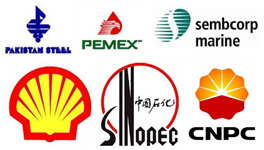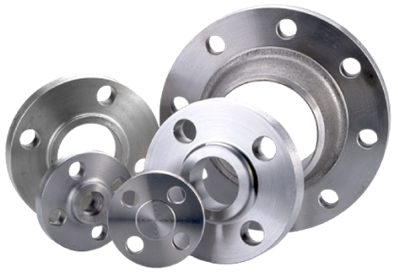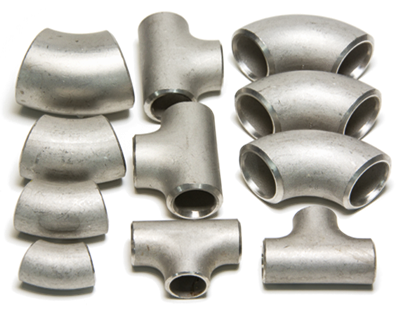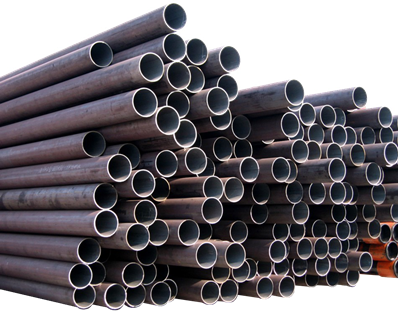Welcome to Steel Blind Flange,Steel Blank Flange,Steel Flange Cap
Contact UsISO 7005-1:2011 establishes a base specification for pipe flanges suitable for general purpose and industrial applications including, but not limited to, chemical process industries, electric power generating industries, petroleum and natural gas industries. It places responsibility for the selection of a flange series with the purchaser.
It is applicable to flanges within facilities engaged in the processing or handling of a wide variety of fluids, including steam, pressurized water and chemical, petroleum, natural gas or related products.
ISO 7005-1:2011 is also applicable to packaged equipment piping, which interconnects individual pieces or stages of equipment within a packaged equipment assembly for use within facilities engaged in the processing or handling of a variety of fluids, including steam and chemical, petroleum, natural gas or related products.
ISO 7005-1 was prepared by Technical Committee ISO/TC 5, Ferrous metal pipes and metallic fittings, Subcommittee SC 10, Metallic flanges and their joints.
This second edition cancels and replaces the first edition (ISO 7005-1:1992), which has been technically revised.
ISO 7005 consists of the following parts, under the general title Pipe flanges:
— Part 1: Steel flanges for industrial and general service piping systems
It also consists of the following parts, under the general title, Metallic flanges:
— Part 2: Cast iron flanges
— Part 3: Copper alloy and composite flanges
This part of ISO 7005 makes normative reference to a family of two distinct steel flange series, each of which has sectorial relevance in noteworthy global marketplaces. Each is widely used within these regional entities. Each of these individual flange series, taken separately, represents a very large installed flange population and as such, it is not an economically viable option to compel replacement with a single flange series.
The steel flange harmonization specified in the previous edition did not achieve the anticipated market acceptance. This can be attributed firstly to the fact that this part of ISO 7005 has not, prior to this revision, been updated and, secondly, that this part of ISO 7005 lacked normative requirements for many materials and their corresponding pressure/temperature ratings. In addition, dimensional compromises made during the drafting of the previous edition have not been acknowledged in important market sectors. While this part of ISO 7005 remained unchanged for many years, sectorial flange standards have kept pace and by doing so maintained market prominence. With this revision, normative reference requirements are added for the two most prominent sectorial flange series, each endowed with significant market presence.
The revision of this part of ISO 7005 is intended to more readily accommodate and expand regional and national standardization needs by providing ready access to a sectorial series whose requirements are contemporaneous with regional imperatives.
1. Scope
This part of ISO 7005 establishes a base specification for pipe flanges suitable for general purpose and industrial applications including, but not limited to, chemical process industries, electric power generating industries, petroleum and natural gas industries. It places responsibility for the selection of a flange series with the purchaser.
It is applicable to flanges within facilities engaged in the processing or handling of a wide variety of fluids, including steam, pressurized water and chemical, petroleum, natural gas or related products.
EXAMPLE
Steam power plant, petroleum refinery, loading terminal, natural gas processing plant (including liquefied natural gas facilities), offshore oil and gas production platforms, chemical plant, bulk plant, compounding plant, tank farm.
This part of ISO 7005 is also applicable to packaged equipment piping, which interconnects individual pieces or stages of equipment within a packaged equipment assembly for use within facilities engaged in the processing or handling of a variety of fluids, including steam and chemical, petroleum, natural gas or related products.
2. Normative references
The following referenced documents are indispensable for the application of this document. For dated references, only the edition cited applies. For undated references, the latest edition of the referenced document (including any amendments) applies.
EN 1092-1, Flanges and their joints — Circular flanges for pipes, valves, fittings and accessories — PN designated — Part 1: Steel flanges
ANSI/ASME B16.5, Pipe Flanges and Flanged Fittings — NPS 1/2 through NPS 24 Metric/Inch Standard
ANSI/ASME B16.47, Large Diameter Steel Flanges — NPS 26 Through NPS 60 Metric/Inch Standard
3. Terms and definitions
For the purposes of this document, the following terms and definitions apply.
3.1 ambient temperature
temperature of the surrounding atmosphere in the immediate vicinity of the flange used in a piping system
3.2 design pressure
most severe pressure, taking into account its corresponding temperature selected for the design of the piping to which the flange is attached
Note 1 to entry: The piping design pressure, taking into account the flange material and its application temperature, is not permitted to exceed the maximum allowable pressure listed in the tables of pressure/temperature ratings of the reference flange standard.
3.3 design temperature
maximum temperature, at design pressure, likely to be reached in operation as either the temperature of the flowing fluid or the temperature at the mid-thickness of the piping wall to which the flange is attached, as specified by the purchaser
Note 1 to entry: The piping design temperature, taking into account the flange material and its application pressure, is not permitted to exceed the maximum allowable temperature listed in the tables of pressure/temperature ratings of the reference flange standard.
3.4 fabricator
individual or organization that takes responsibility for fabrication or installation of piping in accordance with the owner’s piping engineering design specification and in accordance with the requirements of the governing piping code or standard
Note 1 to entry: When so designated by the owner, he may be recognized as the purchaser; not to be confused with a flange manufacturer.
3.5 flanged joint
joint that is composed of interrelated components (flanges, gasket and bolting), which are assembled with good practice to provide both mechanical strength and leaktightness
3.6 flange nominal size
<PN series> alphanumeric designation of size, used for reference purposes, which is common for components used in a piping system, comprising the letters DN followed by a dimensionless number indirectly related to the physical size of the bore or outside diameter of the end connection, as appropriate
Note 1 to entry: The number following DN does not represent a measurable value and is not used for calculation purposes. The use of the prefix DN is applicable to steel flanges bearing PN designations.
Note 2 to entry: Adapted from ISO 6708:1995, definition 2.1.
3.7 flange nominal size
<class series> alphanumeric designation of size, used for reference purposes, which is common for components used in a piping system, comprising the letters NPS followed by a dimensionless number having an indirect correspondence to the physical size of the bore or outside diameter of the end connection, as appropriate
Note 1 to entry: The dimensionless number may be used as a size identifier without the prefix NPS. This size identification number does not represent a measurable value and is not used for calculation purposes. The use of the prefix NPS is applicable to steel flanges bearing class designations.
3.8 flange rating designation
<PN series> alphanumeric designation that is used for reference purposes, relating to flange pressure/temperature capability, ta
king into account flange material mechanical properties and component dimensional characteristics, comprising the letters PN followed by a dimensionless number
Note 1 to entry: The number following the letters PN does not represent a measurable value and is not used for calculation purposes except where specified in a relevant standard. Reference to PN is meaningful only when it is related to a relevant component. The use of the designation PN is applicable to all steel flanges bearing nominal size designations DN.
Note 2 to entry: It is the intent that all flange end equipment of the same nominal size (DN) designated by the same PN number have compatible mating dimensions.
Note 3 to entry: The maximum allowable pressure for a flange having a PN number depends on the flange material and its application temperature and is to be found in tables of pressure/temperature ratings in the reference flange standard.
Note 4 to entry: Adapted from ISO 7268.
3.9 flange rating designation
<class series> alphanumeric designation that is used for reference purposes, relating to flange pressure/temperature capability, taking into account flange material mechanical properties and component dimensional characteristics comprising a dimensionless number that is frequently preceded by the word “class”
Note 1 to entry: The designation number does not represent a measurable value and is not used for calculation purposes except where specified in a relevant standard. Reference to a class is meaningful only when it is related to a relevant component. The use of the designation class is applicable to all steel flanges bearing size designations NPS.
Note 2 to entry: It is the intent that all flange end equipment of the same nominal size (NPS) designated by the same class number have compatible mating dimensions.
Note 3 to entry: The maximum allowable pressure for a flange having a class number depends on the flange material and its application temperature and is to be found in tables of pressure/temperature ratings in the reference flange standard.
3.10 flange series
classification system for flange designs having a common derivation
Note 1 to entry: This part of ISO 7005 specifics flanges of two series: PN series and class series.
Note 2 to entry: It is the intent that all flange end equipment of the same series having the same rating designation and the same nominal size have compatible mating dimensions.
3.11flange style
name used within a flange series for designating dimensional features usually relating to an attachment method
EXAMPLE:Threaded, socket, slip-on, lapped, blind or welding neck.
3.12 fluid service category
category concerning the application of a piping system, considering the combination of fluid properties, operating conditions and other factors which establish the basis for design of the piping system as determined by the purchaser
3.13 manufacturer
individual or organization that takes responsibility for the manufacture of flanges in accordance with the purchaser’s instructions and in accordance with the requirements of this part of ISO 7005
Note 1 to entry: The manufacturer is not responsible for the selection of gaskets or bolting.
Note 2 to entry: If a manufacturer employs subcontractors for certain tasks, he is deemed to retain full control over their work.
Note 3 to entry: Adapted from ISO 15649.
3.14 minimum application temperature
lowest temperature of the flowing fluid at the mid-thickness of a piping wall to which a flange is attached, as determined by the purchaser
3.15 minimum application temperature
when specified by the user it may be the lowest service temperature at the mid-thickness of a piping wall to which a flange is attached
3.16 owner
individual or organization responsible for establishing the requirements for design, construction, examination, inspection and testing that govern the fluid handling or process facility of which the flanges is part
Note 1 to entry: The owner is responsible for the selection of gaskets and bolting as well as the assembly of flanged joints.
3.17 packaged equipment
assembly of individual pieces or stages of equipment, complete with interconnecting piping using flanges for connections in external piping
Note 1 to entry: The assembly may be mounted on a skid or other structure prior to delivery.
Note 2 to entry: The owner can be the individual or organization that purchases flanges and/or, more often than not, that is responsible for operating the facility.
Note 3 to entry: Adapted from ISO 15649.
3.18 pipe
pressure-tight cylinder to which flanges may be attached, used to convey a fluid or to transmit a fluid pressure
Note 1 to entry: Pipe is ordinarily designated “pipe” in applicable material specifications. Materials designated “tube” or “tubing” in the material specifications are often treated as pipe when intended for pressure service.
Note 2 to entry: Adapted from ISO 15649.
3.19 piping
assemblies of piping components, such as flanges or components with flanges attached, used to convey, distribute, mix, separate, discharge, meter, control or snub fluid flows
3.20 piping component
mechanical element, such as a flange or flanged end component, suitable for joining together or assembly into pressure-tight fluid-containing piping systems
EXAMPLE:Pipe, tubing, flanges, gaskets or bolting.
3.21 piping system
interconnected piping components, including flanges, subject to the same set or sets of design conditions
3.22 plant
industrial plant used for the purposes of generating electric power, manufacturing or processing of chemicals, or raw materials or intermediates for such chemicals, where such chemicals may also be petroleum products
EXAMPLE:Power station, chemical plant or refinery.
Note 1 to entry: A plant may include supporting and service facilities, such as storage, utility and waste treatment units.
3.23 purchaser
individual or organization that takes responsibility for specifying requirements for flanges or flanged components, including the designating of the flange series, used in piping system applications in accordance with any requirements established using this part of ISO 7005
Note 1 to entry: The purchaser can be the owner of the plant or his designated agent.
Category:
Recent :
- Hebei Haihao Group is looking for ...
- Hebei Haihao Group Will Attend 21 ...
- What is A234 WPB steel pipe fittings?
- Hebei Haihao Group and Wavin Grou ...
- Quality inspectors of Haihao Grou ...
Recent News:
Our Markets
haihao has been a professional supplier of pipes,fittings and flanges, serving the world industry piping since 1982.

as a leading manufacturer,stockist and supplier, our knowledgeable and experienced technical team can understand well
what you need . help you find the best solution for your regular and specific requirement.
contact us
Our VISION:
“Serving the world flowing! Aiming to be the best in the field! Improving level of “Made in China”!”
Our References






